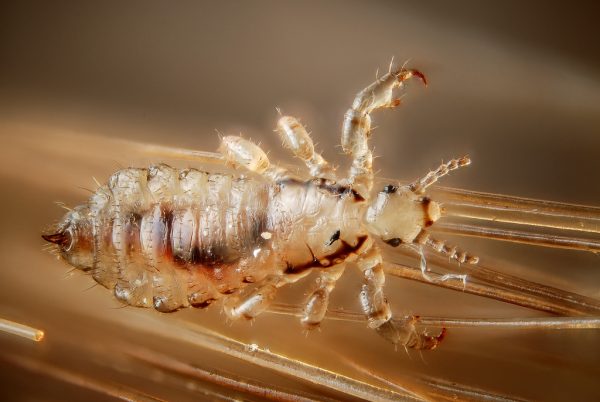
Lice – causes, side effects and treatments at NaturalPedia.com
Wednesday, May 02, 2018 by Michelle Simmons
http://www.naturalpedia.com/lice-causes-side-effects-and-treatments-at-naturalpedia-com.html

Lice are parasites that attach themselves to human hair and feeds on human blood. The most common kind of lice is head lice. Pediculosis capitis is the medical term for an infestation with head lice. There are around 12 million lice infestations that occur each year in the U.S., according to the estimates of the Centers for Disease Control and Prevention (CDC).
The female adult lice can lay up to six eggs per day, which are laid right onto the shaft of hair. The eggs that are less than six millimeters from the scalp are most likely to hatch. They are essentially glued on to the hair by secretions from the female louse. Adult lice are about the size of a sesame seed and can be very difficult to see, because they can be any color from white to tan to brown. Lice typically feed on blood four to five times every day. They use their mouth parts to bite into the skin and secrete a substance that acts to block clotting.
Although lice infestations can occur to anyone, they are of particular concern for school-age children. Children who live in crowded condition are more likely to have a problem with head lice. This is because they are living close to one another and may sleep in the same bed. Poor hygiene is not typically the cause of head lice. Head lice can spread from person to person in two ways: one is by direct head-to-head contact; the other is by sharing hats, caps, hair ties, scarves, or any personal item such as combs or brushes.
Body lice and pubic lice are the other types of lice. Body lice can spread by lice living on unwashed clothing. Unlike other kinds of lice, the spread of body lice can be prevented simply by washing clothes after wearing and avoiding sharing clothing with others. Pubic lice, on the other hand, are spread through sexual activity.

Known side effects of lice
The known side effects of lice include a ticklish feeling on the scalp or neck; an itchy scalp; small red bumps on the scalp, neck, and shoulders; the presence of lice on the scalp; the presence of nits, or lice eggs, on the shaft of hair; and difficulty sleeping, which can result in irritability. Some people affected by lice may also have sores on their scalp, which are likely the result of bacteria from the person’s own body infecting an opening in the skin made by scratching.
Lice infestation can also result in other complications, such as pruritic rash on the back of the neck and behind the ears, due to a hypersensitivity reaction to louse feces; excoriation, skin infection, and impetigo; and anxiety and distress for children and parents.
Body systems harmed by lice
The body system harmed by lice include the integumentary system as it affects the skin, scalp, and hair.
List of foods or nutrients that prevent lice
According to an article published on the website Leaf.tv, raw garlic build ups antibodies that can repel lice, while bay leaves contain natural compounds and aroma that also fend off lice. Other foods that can help repel lice include yogurt, tea, vegetables, and nuts.
Treatments, management plans for lice
Treatments for lice infestation does not necessarily need prescribed medications, as there are home remedies available to treat a head lice infestation. These include wet-combing and the use of essential oils, such as tea tree oil, anise oil, ylang-ylang oil, nerolidol, eucalyptus oil, and lavender oil. Wet-combing is the combing of wet hair with a fine-toothed nit comb that remove lice and some nits. Other home remedies include using mayonnaise, petroleum jelly, blow dryer, nit picking, salt and vinegar, and extreme house keeping.
Where to learn more
- Most head lice now resistant to common insecticides, new study finds
- Use This Natural Substance to Get Rid of Roaches, Fleas and Even Lice
- Coconut oil: A true Magic Bullet
- Can you be Allergic to Water? Water Allergy Beach Safety Tip
- Insecticidal resistance in head lice leads to search for natural treatment
Summary
Lice are parasites that attach themselves to human hair and feeds on human blood.
Lice causes a ticklish feeling on the scalp or neck; an itchy scalp; small red bumps on the scalp, neck, and shoulders; the presence of lice on the scalp; the presence of nits, or lice eggs, on the shaft of hair; and difficulty sleeping.
Lice can be prevented by garlic, bay leaves, yogurt, tea, vegetables, and nuts.
Lice can be treated with wet-combing, essential oils, mayonnaise, petroleum jelly, blow dryer, nit picking, salt and vinegar, and extreme house keeping.
Sources include:
Tagged Under: Tags: Lice





